Why do lemming populations fluctuate so dramatically? This intriguing question leads us into the heart of understanding the life cycle of these small, yet significant rodents. Lemmings, known for their cyclical population dynamics, experience periods of rapid growth followed by sudden declines, a phenomenon that has puzzled scientists and nature enthusiasts alike.
Lemmings are small, stout rodents with dense fur, adapted to the cold environments of the temperate and polar regions they call home. Their diets are primarily vegetarian, feeding on the tundra’s vegetation, which supports their survival and reproductive strategies. The population cycles of lemmings are a key aspect of their existence, with numbers swelling during periods of abundant food resources, followed by sharp declines when these resources become scarce. This boom-and-bust cycle not only affects the lemmings themselves but also has profound implications for the broader ecosystem, influencing the population dynamics of predators and the overall health of their habitats.
Understanding the natural fluctuations in lemming populations offers a window into the complex interconnections within ecosystems. It highlights the delicate balance between species and their environments, showcasing the adaptability and resilience of these creatures. The study of lemming population dynamics continues to be a rich field for ecological research, shedding light on the broader principles that govern life in some of the planet’s most challenging environments.
Key Takeaways
Lemmings play a critical role in their ecosystems, inhabiting regions that span from North America to Eurasia. Their plant-based diet is a key factor in their ability to quickly multiply, influencing both their numbers and migration patterns. These shifts in population are vital, impacting not just the lemmings themselves but also the broader health of their habitats.
While misconceptions about lemming behavior have been addressed over time, the challenge posed by climate change persists. The impact of global warming on lemming habitats and their conservation status requires further study to ensure these small animals remain an integral part of their ecosystems.
Key Takeaways:
- Lemmings are significant to their ecosystems, with a presence in both North America and Eurasia.
- Their herbivorous diet supports fast reproduction, affecting population dynamics and migration.
- Population fluctuations are important for the health of their ecosystems.
- Misconceptions about lemmings have been corrected, but climate change poses a new threat.
- Research into the effects of climate change on lemmings is necessary for their conservation.
Scientific Classification
Lemming Habitats and Adaptations
Lemmings, these small rodents, are a fascinating study of adaptation and survival. Belonging to the subfamily Arvicolinae and the mouse family Cricetidae, they’re divided into various species and genera, such as Dicrostonyx and Lemmus. Each of these species showcases physical characteristics that are a testament to their ability to adapt to their specific environmental conditions. The Dicrostonyx genus, for instance, includes species known as collared lemmings, which are especially adapted to the cold environments they inhabit. On the other side, the Lemmus genus includes brown lemmings, which have their own unique adaptations.
Scientific Inquiry and Ecological Impact
The detailed classification of lemmings into species and genera based on both physical and genetic characteristics opens doors to a wealth of scientific inquiry. It allows researchers to delve into the specifics of how these animals have evolved to thrive in their respective niches. Understanding the distinctions between species such as those in Dicrostonyx and Lemmus enables a deeper comprehension of their survival strategies. This knowledge isn’t merely academic; it has practical implications for understanding the dynamics of the ecosystems where lemmings play critical roles. Their impact on vegetation and their place in the food web are just two examples of the ecological significance of these small but mighty creatures.
Ecosystem Dynamics and Lemming Roles
The role of lemmings in their ecosystems can’t be overstated. Their unique characteristics and behaviors have a profound impact on the arctic tundra and beyond. By examining the specific adaptations and ecological roles of different lemming species, scientists can gain insights into the broader picture of ecosystem health and stability. The study of lemmings, therefore, extends beyond mere classification; it’s a key to unlocking the mysteries of nature’s intricate balance.
Habitat
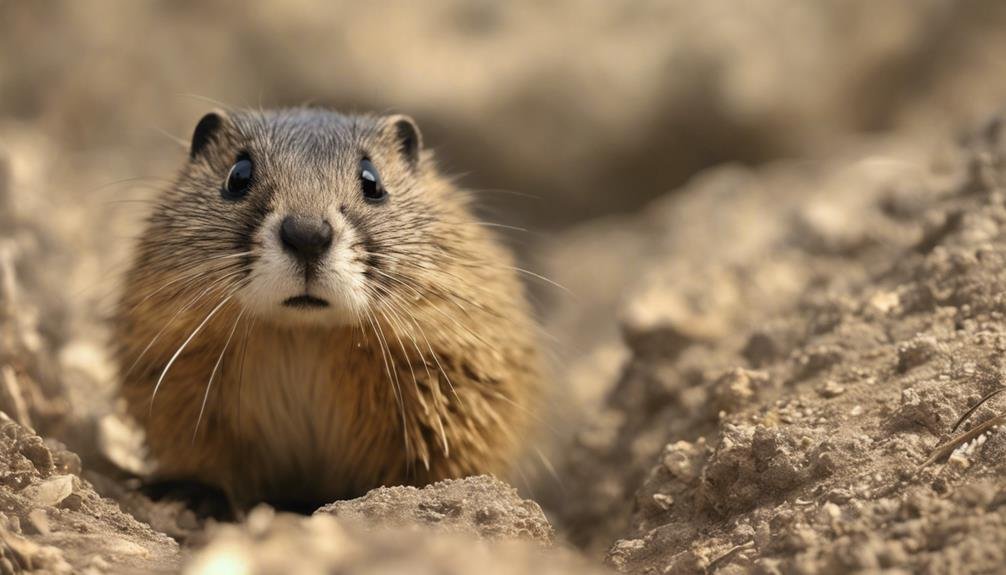
Habitat of Lemmings: A Tale of Adaptation and Survival
Lemmings, small rodents known for their resilience, call the Arctic tundra, woodland areas, and alpine regions their home. Their existence in these harsh climates is a testament to their incredible adaptability and survival strategies. Let’s dive into how these environments shape their lives and the unique adaptations they’ve developed.
The Harsh Arctic Tundra and Alpine Environments
In the vast and open Arctic tundra and the rugged alpine regions, lemmings face a world with minimal vegetation and extreme cold. Here, these hardy creatures utilize the limited resources available to create elaborate underground networks. These burrow systems provide much-needed refuge from the severe weather and predators, showcasing the lemming’s ingenuity in survival tactics. The sparse vegetation of grasses and moss becomes not just food but a material for constructing their underground homes.
The Slightly Warmer Woodland Habitats
Moving into the woodland areas, lemmings encounter a slightly less hostile environment. The denser vegetation offers more than just nourishment; it provides materials such as grass, ox wool, and feathers for building nests. The woodland’s rich biodiversity presents both opportunities and challenges for lemmings, who continue to demonstrate their adaptability by burrowing into the earth to create safe havens.
Mastering the Cold: Lemming’s Survival Strategies
The remarkable ability of lemmings to construct burrows and underground tunnels is a prime example of adaptation to life in cold climates. These structures are crucial for their survival, offering protection from the harsh weather and predators. Lemmings’ skills in navigating and exploiting their environment underscore their resilience and resourcefulness.
In the world of lemmings, every aspect of their habitat challenges them to adapt and survive. From the icy expanses of the Arctic tundra to the relative warmth of woodland areas, lemmings have evolved to turn adversity into advantage. Their lives in these cold climates are a compelling story of adaptation, resilience, and survival.
Diet

Adaptations in Diet
Lemmings, small mammals known for their resilience, have evolved a diet that’s perfectly suited to the challenging conditions of their habitat. This diet consists of a variety of plant materials such as grass, moss, leaves, shoots, seeds, and berries. Their ability to efficiently digest these fibrous plants is due to their specialized teeth and digestive systems. These adaptations aren’t just about survival; they play a critical role in maintaining the ecological balance of their environments by providing a reliable food source for predators.
Seasonal Dietary Strategies
The feeding habits of lemmings are a testament to their flexibility and ingenuity. They adjust their diet based on the seasonal availability of plant life, showcasing an impressive ability to adapt to their ever-changing ecosystems. During times when food is abundant, they store food in their burrows, ensuring they’ve access to necessary nutrients even when the landscape is barren. This strategy showcases their foresightedness and adaptability, traits that are vital for survival in the wild.
Ecological Contributions
The herbivorous diet of lemmings has far-reaching effects beyond their own survival. By consuming a wide array of plant materials, they play a vital role in seed dispersal, which is essential for plant regeneration and biodiversity. This not only supports their own population but also enhances the health and vitality of their habitat. Their dietary habits contribute to the robustness of their ecosystems, making lemmings key players in their environmental communities.
Behaviour
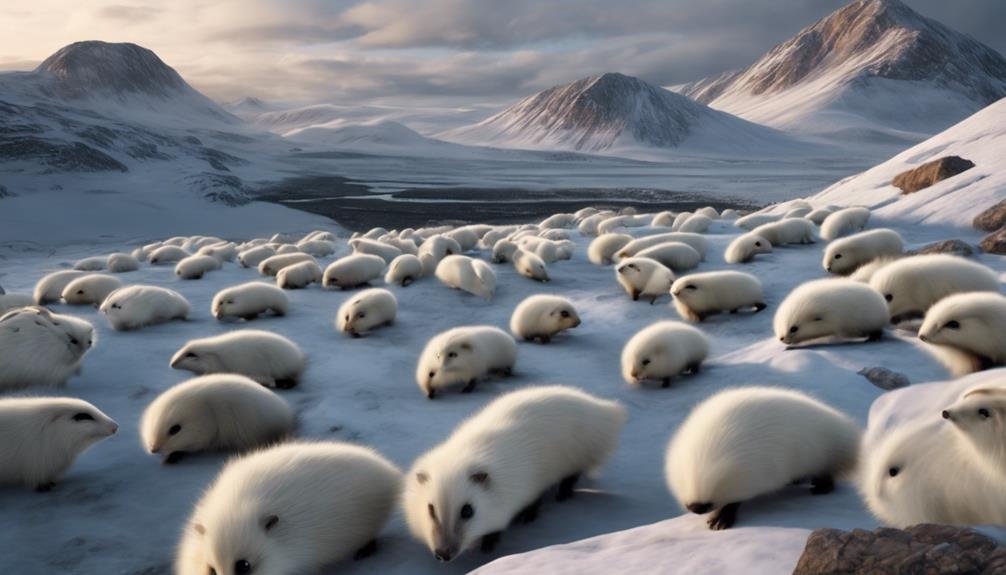
Exploring the complex behaviors of lemmings reveals much about their ecological role and survival strategies. These small but fascinating creatures navigate their world through a blend of solitary and social habits, territorial instincts, and unique communication methods.
Solitude and Sociability: Lemmings, known for their preference for living alone, surprise many with their periodic social interactions. These moments of sociability occur primarily during migration and mating seasons, showcasing their ability to adapt to the needs of survival and species continuity.
Territoriality and Aggression: In the sphere of mating, lemmings exhibit strong territorial behaviors. They become aggressive if their space is invaded, highlighting the significance of territorial boundaries in their interactions.
Communicative Bonds: The sounds lemmings make, particularly the high-pitched squeals, aren’t random noise but crucial communication tools. These vocalizations serve to deter predators and maintain the unity of the group during migrations. The ability to swim effectively, thanks to their waterproof fur, plays a pivotal role in their migration success and evasion from predators.
Conservation
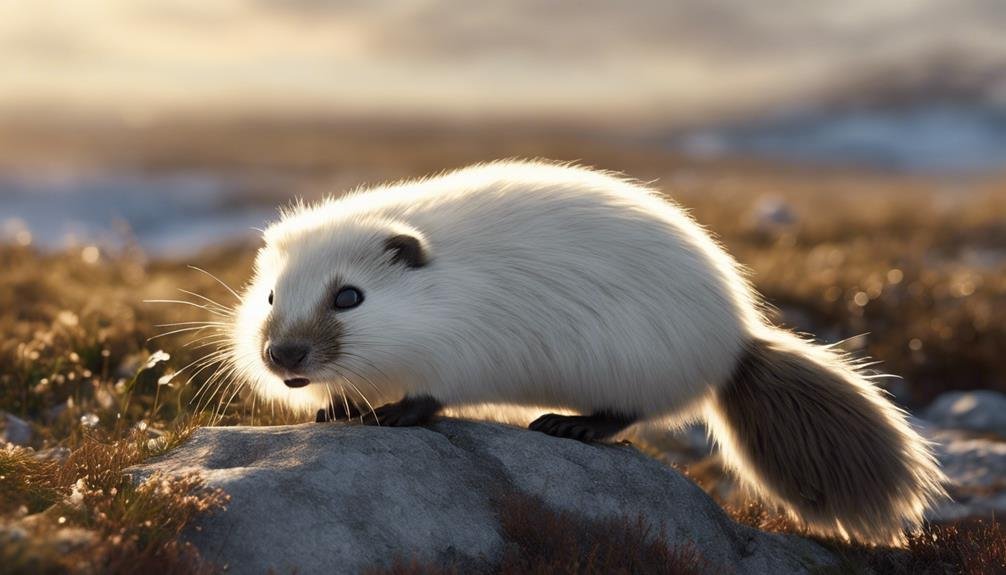
The Role of Lemmings in Arctic Ecosystems
Lemmings play a pivotal role in the Arctic ecosystems, acting as a key food source for a variety of predators. Their presence is indispensable for maintaining the balance within these frigid habitats. The survival and thriving of these small rodents are symbiotically linked to the health and stability of the entire ecosystem.
Monitoring and Research: Guardians of the Arctic
The observation and study of lemming populations are fundamental activities that shed light on the overall health of the Arctic. Researchers engage in detailed ecological studies to track the fluctuations in lemming numbers, which in turn reflect the impacts of environmental changes. This ongoing research is the backbone of effective conservation strategies, aimed at mitigating the repercussions of such changes on wildlife.
Conservation Strategies: Safeguarding Arctic Biodiversity
Preserving the habitats of lemmings is a strategic move towards the conservation of Arctic biodiversity. The methodologies employed range from the protection of natural habitats to more complex ecological interventions designed to ensure the long-term viability of these environments. Through such focused conservation efforts, the aim is to secure a future where the Arctic remains a vibrant and balanced ecosystem.
The Impact of Environmental Changes
Understanding the influence of environmental changes, particularly climate change, on lemming populations is critical. This knowledge is gleaned through meticulous monitoring and wildlife studies, which provide insights into how shifts in the climate are reshaping the Arctic landscape and its inhabitants. Recognizing these patterns is crucial for developing responsive conservation measures that can adapt to the evolving challenges.
These concerted efforts in research and conservation underscore the significance of lemmings in the Arctic. By ensuring the continuity of these initiatives, we can aspire to maintain the ecological equilibrium and the rich biodiversity of the Arctic regions.
Climate Change Impacts
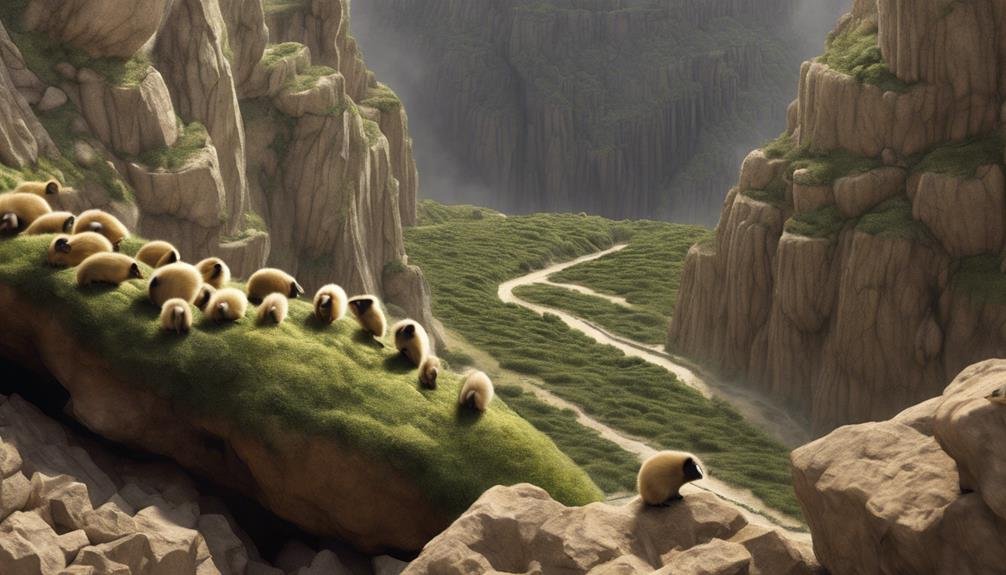
Climate change significantly impacts lemming populations by altering their habitat and food availability, disrupting their migration and breeding cycles. As the Arctic tundra undergoes transformations due to rising temperatures, these small rodents face challenges that threaten their survival and reproductive success. To grasp the severity of the situation, let’s discuss the specifics of how climate change affects lemmings:
Alteration of Habitat: The melting permafrost and loss of Arctic tundra compromise the integrity of lemming burrows and nesting sites. This degradation not only exposes them to predators but also to harsh weather conditions, further endangering their populations.
Shifts in Food Sources: Changes in vegetation growth and distribution directly influence the food sources lemmings rely on. Climate change shifts the balance of flora in the Arctic, forcing lemmings to adapt to new dietary options or face starvation. The unpredictable nature of vegetation growth in these changing conditions exacerbates this situation.
Rise in Competition: Warmer temperatures may lead to more lemming populations competing for the same dwindling resources. This increase in competition not only stresses individual lemmings but also has the potential to decrease overall population numbers due to limited food and habitat availability.
These factors collectively underscore the critical impact of climate change on lemming populations, highlighting the urgent need for conservation efforts to mitigate these changes and preserve the Arctic tundra ecosystem.
Other Interesting Facts
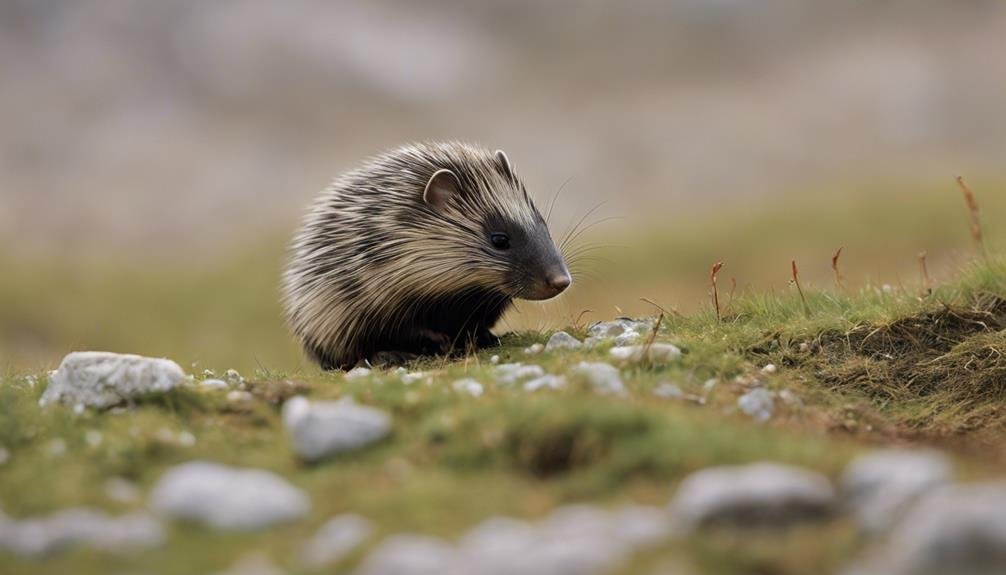
In the vast and often unforgiving landscape of the Arctic ecosystem, lemmings stand out not just for their resilience but for a variety of behaviors and traits that ensure their survival. Let’s delve into some of these fascinating aspects, highlighting their adaptability and complex interactions within their environment.
Engineering Marvels in the Arctic: The ability of lemmings to construct complex tunnel systems is a testament to their engineering skills. These tunnels provide much-needed shelter and a way to access food during the winter, showcasing their adaptability to extreme conditions.
Complex Social Structures for Survival: Lemmings also exhibit a nuanced social hierarchy, where dominant individuals enjoy priority access to resources. This social structuring is key to efficient resource distribution, reproduction, and maintaining territorial behavior, all of which are vital for the survival and cohesion of their groups.
Masters of Aquatic Escape: Not only are lemmings skilled engineers and social beings, but they’re also adept swimmers. Their use of hind feet for paddling and tails as rudders is ingenious, aiding in navigation, colonization of new territories, and predator evasion. This ability highlights their remarkable adaptability and resilience.
Territorial Instincts for Cohesion: The territorial behavior of lemmings is another aspect of their complex interaction. By maintaining specific territories within groups, they ensure group cohesion and optimize their survival strategy in the challenging Arctic environment.
Innate Navigation Capabilities: Lemmings possess an inherent skill in using natural landscape features for orientation, which enhances their adaptability and efforts in colonization. This navigation skill is crucial for their survival, allowing them to explore and adapt to new territories efficiently.
Each of these aspects—Engineering Marvels in the Arctic, Complex Social Structures for Survival, Masters of Aquatic Escape, Territorial Instincts for Cohesion, and Innate Navigation Capabilities—highlights the remarkable adaptability of lemmings. Their ability to thrive in the Arctic ecosystem underscores the complexity of their social and ecological interactions.
What is the Relationship Between Lemmings and Ivory Gulls in Their Ecosystem?
Lemmings and ivory gulls have a symbiotic relationship in their ecosystem. Lemmings provide a primary food source for ivory gulls, while ivory gulls help maintain lemming populations by preying on their predators. Understanding this interaction is important for conservation efforts. To learn more about ivory gull facts, check out our ivory gull facts article.
Frequently Asked Questions
What Are Some Fun Facts About Lemmings?
What causes lemming population cycles to fluctuate?
Lemmings experience dramatic fluctuations in their population sizes due to factors like predation, food availability, and climate conditions. These cycles typically span several years, during which the population can increase and decrease significantly.
How do lemmings adapt to their winter environments?
Lemmings have developed unique adaptations for survival during the harsh Arctic winter. They grow thick winter coats and create complex tunnel systems under the snow to protect against the cold and predators.
What are some common myths about lemmings, and what is the truth?
A common myth is that lemmings commit mass suicide by jumping off cliffs. In reality, their migratory behavior can lead them to accidentally fall off cliffs or drown in bodies of water, but these actions are not intentional suicides.
How do lemmings’ fur color variations aid in their survival?
The fur color of lemmings changes with the seasons; they have brown or gray fur in the summer and white fur in the winter. This seasonal color variation helps them blend into their environment, aiding in camouflage from predators.
What strategies do lemmings use to avoid predators?
Lemmings utilize their tunnel networks, camouflage, and sometimes aggressive behavior to evade predators. Their ability to rapidly reproduce also ensures the survival of the species despite high predation levels.
What Do Lemmings Eat?
What do lemmings eat?
Lemmings feed primarily on vegetation such as grass and moss. Their diet also includes insects. They adapt their feeding strategies based on the season and climate conditions to meet their nutritional needs and evade predators.
How Long Do Lemmings Live For?
How long do lemmings typically live?
Lemmings generally have a lifespan of 1 to 2 years. This duration is influenced by factors such as predation, harsh climates, and disease. Despite these challenges, their rapid breeding cycles and adaptive survival strategies help in sustaining their populations. However, changes in their habitat and climate conditions play a significant role in shaping their population dynamics.
What Makes Lemming Unique?
Q: What are the unique characteristics of lemmings?
A: Lemmings are distinct for their remarkable ability to adapt to the harsh conditions of the Arctic. This includes their migration patterns, which are crucial for their survival and population control. They showcase a remarkable color variation that changes with the seasons, aiding in camouflage. During winter, they develop adaptations such as thicker fur to withstand cold temperatures. Lemmings also exhibit unique social behavior, forming complex burrowing systems that protect them from predators. Their population cycles are notable, with dramatic fluctuations that influence the Arctic ecosystem. Lastly, their tail length is adapted to enhance their agility and navigation through their environment, playing a critical role in evading predators.
What Role Do Lemmings Play in the Ecosystem That Affects Musk Oxen?
Lemmings play a crucial role in the Arctic ecosystem, serving as prey for predators that would otherwise target larger herbivores like musk oxen. This balance indirectly helps preserve musk ox populations. Among *musk ox fascinating facts,* their relationship with lemmings exemplifies how interconnected species are in such harsh environments.
Do Arctic Wolves Prey on Lemmings in the Wild?
Arctic wolves are skilled hunters that primarily feed on larger prey like caribou and muskoxen, but they also hunt smaller animals when necessary. Lemmings, being abundant in the tundra, are a common food source. These opportunistic behaviors are part of arctic wolf characteristics, showcasing their adaptability to harsh environments.
Conclusion
Lemmings have a significant role in their environments, thriving in diverse habitats from North America to Eurasia. Their herbivorous diet fuels their ability to reproduce rapidly, which in turn affects their population size. These population changes are crucial, as they not only dictate the lemmings’ migration habits but also the overall health of their ecosystem.
The common misconceptions about their behavior have been corrected over time, yet the challenge of climate change remains. The effects of a warming world on lemming habitats and their conservation status are areas that need ongoing research to ensure these small creatures can continue to be a vital part of their ecosystems.


